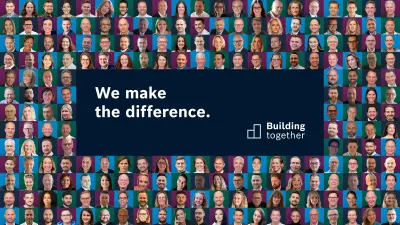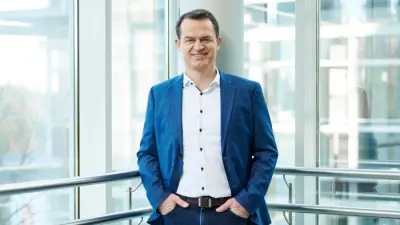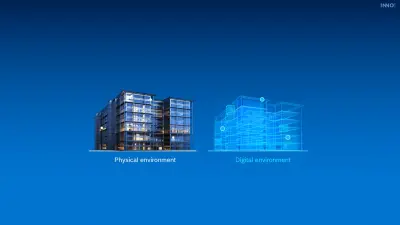Let´s get DIGITAL!
Buildings with advanced digital technology provide strategic advantages and stand on a particularly solid foundation. That not only makes them fit to withstand any potential future challenges, it also equips them for the present. After all, digitalization is now helping to make flexible and intelligent facilities management a reality, and is therefore also helping to find solutions to the most significant challenges already being faced.
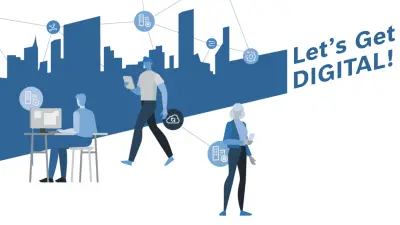
The balancing act between economic viability and sustainability in building and property management and the increasing demands of building users present owners and operators with a difficult task. Recent changes have made it crucial to be able to react faster than ever before. Existing processes and systems must be scrutinized and adapted to new realities. If it was not apparent before, the pandemic made it crystal clear: the future is all about data-driven solutions. How can owners and operators use the potential of digitalization to prepare buildings for times to come?
Challenge#1: Making new worlds of work reality
Who still remembers open-plan offices with cubicles, uncomfortably cool cafeterias and colorless conference rooms? Once upon a time, workplaces were supposed to be functional above all else; today, an environment that caters to its users and prioritizes individual satisfaction is the way forward. Between New Work philosophy and economically viable flexibility, new worlds have emerged that are defined by activities. Hybrid working has become a norm in many sectors, while formerly rigid concepts have morphed into inspiring co-working spaces and tedious, manual processes are or are becoming ever more digital. The transformation of the work environment is oriented toward the requirements of the digital generation, which, since 2020, makes up more than 50% of the workforce (German Federal Statistical Office). The logical consequence is not only a change to floor plans, but also smaller ones that cater to demands for more flexibility. Digital solutions help to reduce costs for the operator, while ensuring user satisfaction: efficient floor-space management is aided by sensors – and it is convenient for employees to book conference rooms and workspaces, and record work hours using a smartphone, among other things. This also saw improvements being made to aspects related to security, and it is now possible to link access control equipment with intrusion alarm systems and control them using a mobile access solution. Today’s automation solutions help facilities to adapt to new demands quickly by ensuring that temperature, air conditioning and lighting provide comfortable and healthy environments, which are appropriate to the situation and incur minimal operating costs.
This is also confirmed by Matthias Mosig, Head of the GEFMA working group digitalization, Head of digital transition at TÜV SÜD Advimo GmbH: “Flexible open-office concepts, work from home and telecommuting, population pyramids and sustainability goals are all projected to contribute to further reductions in floor space requirements. Digitalization in the form of workspace management systems and the integration of IoT applications with integrated sensors will become an important instrument in the intelligent management of floor space requirements and availability, as well as its partial automation. Regarding the occupancy situation, the migration of daily and potential load conditions into systems that use predictive modulation of building control technologies will promote energy use optimization.”
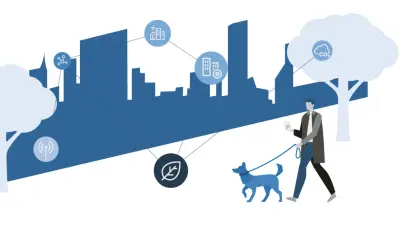
Challenge#2: Lowering operation costs
More than ever before, the optimization and reduction of costs is a priority when it comes to the construction and operation of buildings. 80% of all building costs are generated by operating expenses, while the costs of energy and specialist personnel – which is becoming more and more difficult to find – are increasing. Investors and operators are demanding efficiency and flexibility, maximum comfort with minimum use of energy and personnel, as well as the ability to tweak fluctuating operating costs. The intelligent use of data from building technology, diverse systems, and software and sensors allows costs to be reduced, processes to be simplified and sped up, and scenarios and prognoses to be developed. The latest cloud-based building management system uses real time data and help from a digital twin to ensure full transparency and optimized operating processes without a requiring significant manual intervention: remote monitoring, as well as optimization and malfunction management, become less time-intensive and more predictable; adverse operating conditions are detected early and corrected before disruptions can occur. Building automation is not a ‘nice-to-have’ but rather a ‘must-have’ for sustainable management.
With an investment equivalent to only 1% to 2% of construction costs, it provides enormous leverage over the entire life cycle of a building and is also a good starting point for digital property modernization. As concerns building security, artificial intelligence and new technologies help operators to better understand anomalies and take proactive measures. For instance, operators receive ‘intelligent insights’ from software that is able to evaluate video images captured in real time using several cameras, and generate recommendations for action based on the data.
#DigitalBuildingManagement #BuildingAutomation #PredictiveMaintenance #DigitalBuildingTwin

Challenge#3: Promoting sustainability
Buildings are currently responsible for 40% of CO₂ emissions worldwide. Intelligent buildings can make a major contribution to reducing these emissions.
Connected energy management solutions make energy use, savings made, and the CO₂ footprint of the building fully transparent, while also enabling increased energy efficiency and emissions savings of up to 30%. Building automation uses presencebased climate control, ventilation control, intelligent lighting and shade control, among other systems, to save energy. Many existing commercial buildings already make use of building automation systems, which, even in their current form, are easy to modernize and upgrade. More potential savings can be identified using information from access control and video systems. Cloud-based IoT services for remote use improve the performance of HVAC systems by analyzing use and proposing optimizations. That not only saves energy but also time, while simultaneously helping to prevent long commutes – for external technicians too – and to lower CO₂ emissions.
#GreenBuildings #EnergyServices #CO₂neutral
Digitalization of buildings – which potential is there?
Whereas there was previously a focus on individual elements of building technologies, smart digital buildings represent a decisive step forward, enabling a holistic view of an entire building. Using networking and digital services, entire ecosystems are created in which disparate disciplines in building technology all work in tandem. This allows data to be merged, which creates the greatest possible added value for owners, operators, users and the environment. The digital transformation of buildings is a step-by-step process. How is your building progressing?
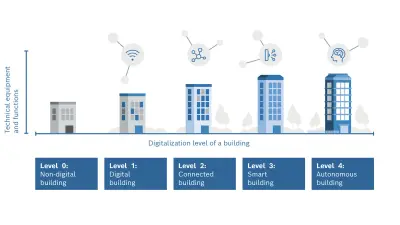
The digital transformation of real estate is taking place step by step.
What about the development of your building? Our experts will help you answer this question.


